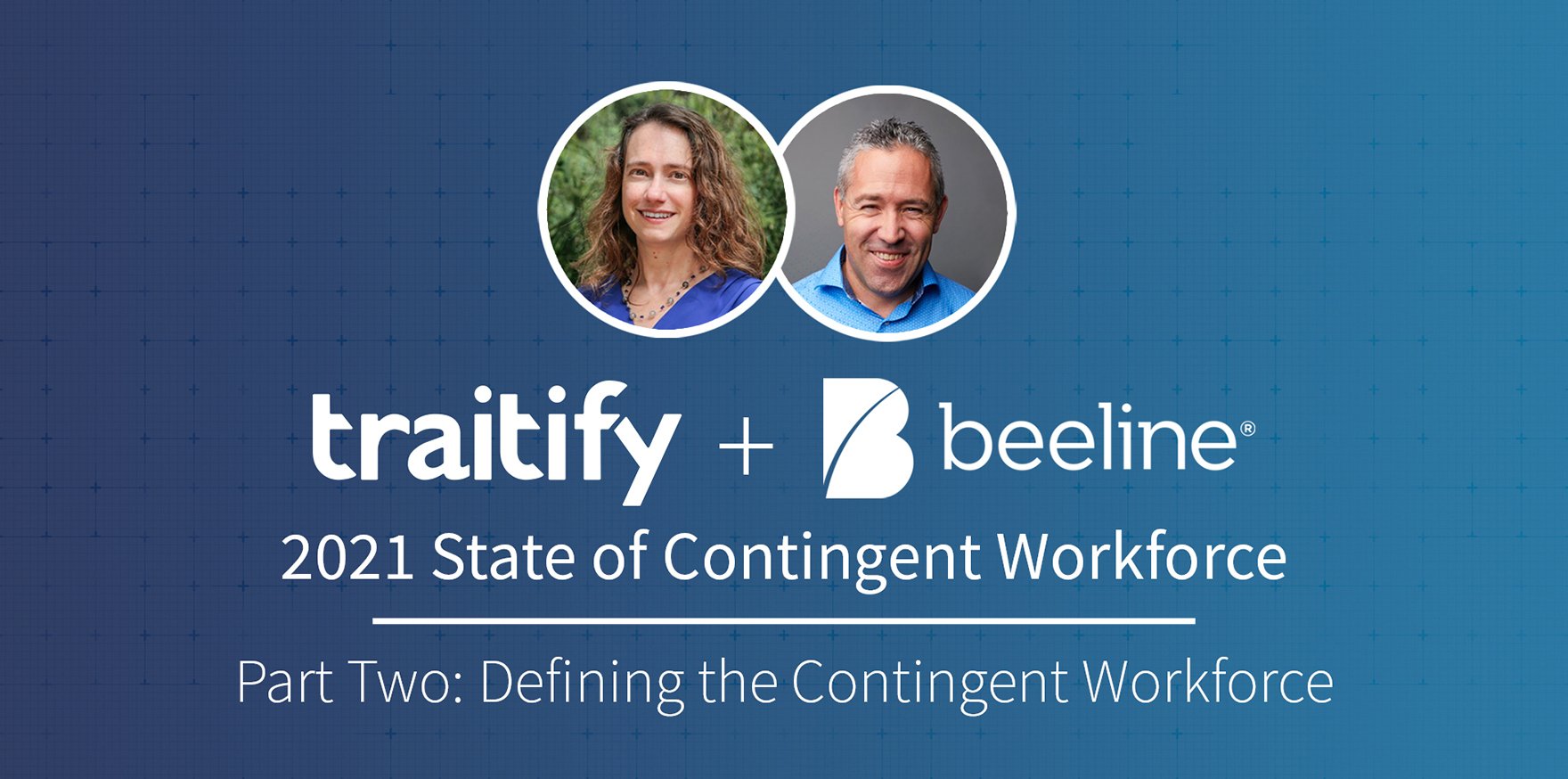Comparing the “contingent" versus “traditional” workforces in definition and recruitment tactics, Dr. Heather Myers and Brian Hoffmeyer of Beeline continue our five-part video series.
ICYMI, here is the 1st part of the series introducing our experts.
Continue to the 3rd part of the series on the current state of the contingent workforce here.
The full series is also on YouTube here.
Transcript:
HEATHER: Now for those in our audience who might not be familiar with the term “contingent workforce” (I know for us it’s easy to get into the jargon), how would you define that for them and explain really what you mean by the “contingent workforce?”
BRIAN: Yeah, it’s a great question because it is a varied definition. I remember a presentation a couple of years ago. We created a word cloud that showed all of the different terms that our clients use for the contingent workforce, and it was a busy word cloud. There were a lot of different words up there. So you hear “contractor,” “temporary,” “contingent,” “gig worker,” “consultant,” “independent contractor,” — you know, and then you know — there’s regional and country-specific variations in what they call these things. And they all have different perceived, or even real legal meanings. But most broadly, when we talk about the contingent — or more commonly we’re trying to use the word “extended” workforce these days, it’s anybody that does work for a company that’s not an employee of that company, right? So they don’t have an employment agreement with that company and in what the big difference is is that the engagement has a defined start and end date. In today's world — it’s a whole other conversation, I don’t believe anybody is truly a permanent employee, because most people move companies very regularly — but people that are employees have a start date, but you don't have a defined end date. People that we’re talking about, the workers that our system manages always have a defined start date and end date, but there's many different ways that companies engage with them. They’re engaged as individuals to augment a team, maybe you know somebody's out on extended leave, or for a special project where there's a skillset missing and a manager's like, “I need somebody with this development skill, a java developer,” or what have you, that also engaged in groups under statement of work-kind of engagements where a company says, “I’m going to outsource the development of a new website to this external third party, and I'm not paying people on an individual basis. I’m paying a firm maybe based on deliverables.” But what’s common is its people delivering that work. It also varies in terms of the kind of people, ranging from people that are working in a warehouse picking and packing boxes at a distribution center all the way up to very high-end IT consultants. There’s a very big range. It does include things that are sort of popular buzzwords like gig workers.
HEATHER: So a very defined job that someone’s hired for to do, and that can span a lot of industries and a lot of types of work. It’s really more about kind of the finite quality of the work.
BRIAN: Yeah, very much so. It does. Our clients come from every industry vertical out there, you know, as well as every geography. We operate in 100-some odd countries around the world in all the major verticals. The ways companies use contingent labor does vary for vertical to vertical, and even from company to company, because you know one of the big drivers we’d be really remiss not to talk about is that sometimes it’s not up to the company to decide how they’re going to engage a particular worker because in certain skill sets it’s the worker themselves that are saying, “You know, hey, we want to work in this way. We like the variety it gives us, in terms of, doing a three-month project and then taking a month off and moving on to another three-month project.” In many highly-in-demand skill sets, it's the worker who gets to decide.
HEATHER: And do you think that changes the way we recruit, for sort of a traditional employee versus the contingent workforce?
BRIAN: In my view, not a ton. You know, maybe where there's less commonality is — and I know we’re going to talk about this a bit — is in what we call high-volume staffing. In that world, you know, maybe it's a distribution center for a retailer and they run an advertisement that has a bigger than expected response, and they get tons of orders. And you know they find out that on a Sunday night at 8 p.m. that they’ve got this massive order that has to be shipped on Monday. They literally need 40 more people Monday morning, that's kind of a different process.
Contact:
Heather Myers, Ph.D. - heather@traitify.com, Heather Myers, Ph.D.
Brian Hoffmeyer - hoff@beeline.com, Brian Hoffmeyer, homechefhoff
To learn how Traitify can help you attract, select, and engage contingent workers, connect with us!





